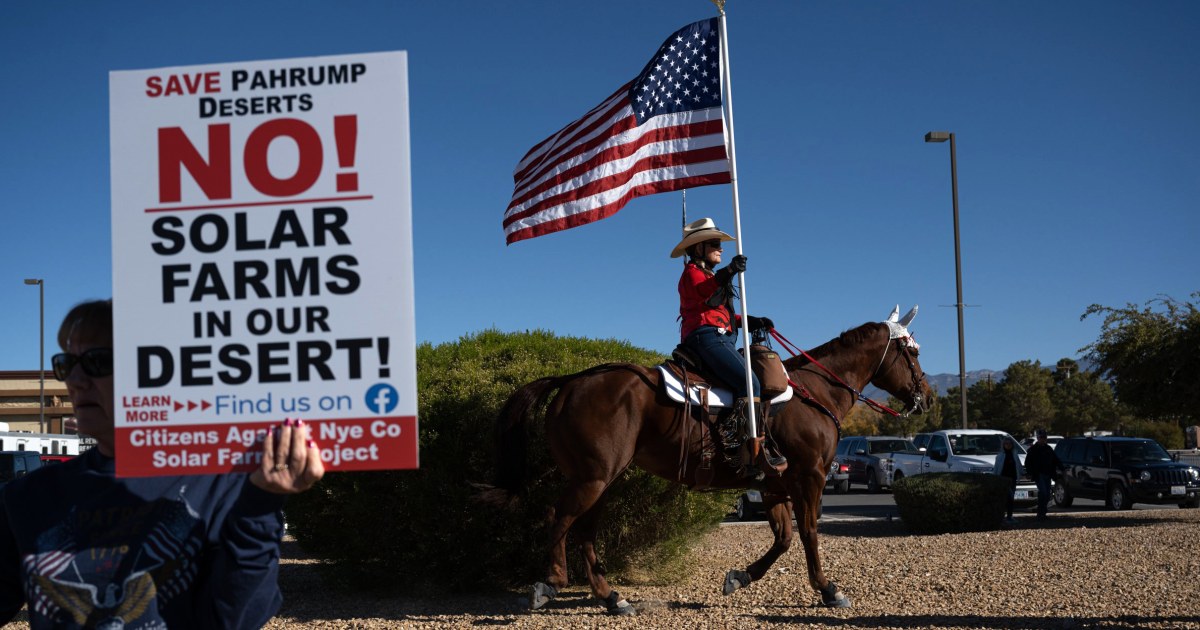
As climate change ravages the country with droughts, wildfires and heat waves, Nevada is making a push to become a leader in renewable energy. About 80 percent of the state is public land, much of it maintained by the Bureau of Land Management. The nearly year-round sunshine and abundance of space make it an attractive option for solar companies.
But community members and conservationists worry that green energy projects are not entirely clean and could destroy thousands of miles of untouched land. They are part of a growing chorus of people who say they support clean energy, including solar, but not at the expense of local ecosystems.
Large-scale solar fields run the risk of displacing native plant and animal life, contributing to ferocious dust storms, and disturbing fragile desert soil capable of capturing much-needed moisture from the air.
“We need to recognize that any form of energy is going to have some impacts,” said Nels Johnson, North American director for renewable energy at The Nature Conservancy. “The question is how do we try to avoid and minimize those impacts?”
Among those impacts is damage to the desert’s crust, a thin layer of soil on the surface that acts like a seal, trapping both carbon and nutrients underneath. Removing the crust can contribute to powerful dust storms that release particles and carbon into the air, Johnson said. Those particles can be unhealthy, especially for people with existing respiratory conditions.
Last week, a solar company was fined almost $220,000 for failing to control dust during construction and blowing some 70 tons of excess dust into the air, The Associated Press reported.
Native animal species are also at risk. Last year, a team of biologists moved 139 Mojave desert tortoises, a threatened species, off the site of the 3,000-acre Yellow Pine Solar Project 10 miles south of Pahrump. Thirty of the tortoises were killed, possibly by badgers, conservationists said. And across the border in California’s Mojave Desert, the Ivanpah Solar Electric Generating System killed some 6,000 birds annually in 2016.
Source: | This article originally belongs to Nbcnews.com









